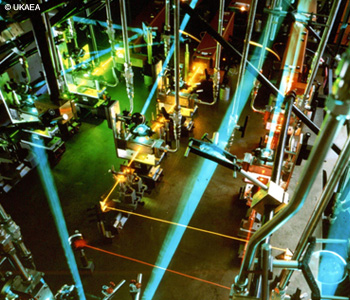Feature
History of Gas Lasers, Part 2: Pulsed Gas Lasers
In this second article of a two-part series, Colin Webb explores the origins of pulsed gas lasers, which made possible many critical applications of laser technology, including corneal reshaping and microlithography.
 Copper vapor lasers pump dye lasers for AVLIS experiments at UKAEA Harwell, U.K.
Copper vapor lasers pump dye lasers for AVLIS experiments at UKAEA Harwell, U.K.
Ask anyone to name the most important application of lasers, and they will probably point to their clinical use—for example, lasers that reshape the cornea of the eye to correct vision defects, as explored in this month’s cover article on “Lasers in Ophthalmology.” The laser that has made corneal reshaping possible is the argon fluoride (ArF) excimer laser, which operates at 193 nm. It is a rare gas halide (RGH) excimer laser, a type that burst on the scene in 1975.
…Log in or become a member to view the full text of this article.
This article may be available for purchase via the search at Optica Publishing Group.
Optica Members get the full text of Optics & Photonics News, plus a variety of other member benefits.
